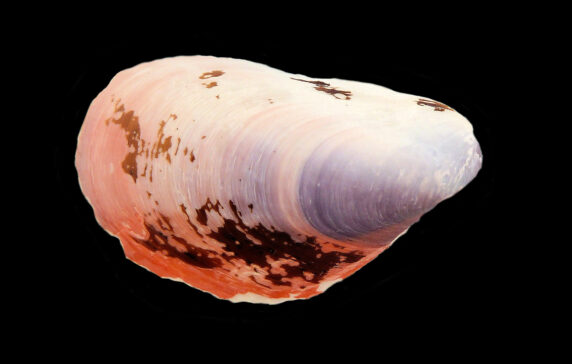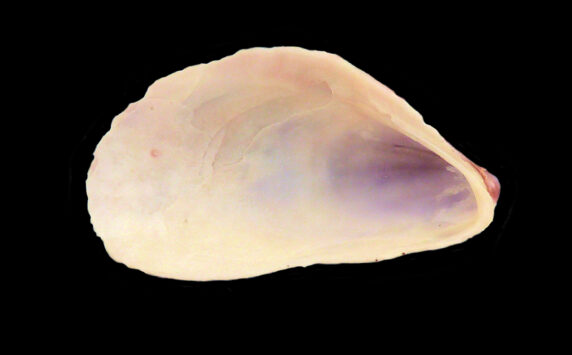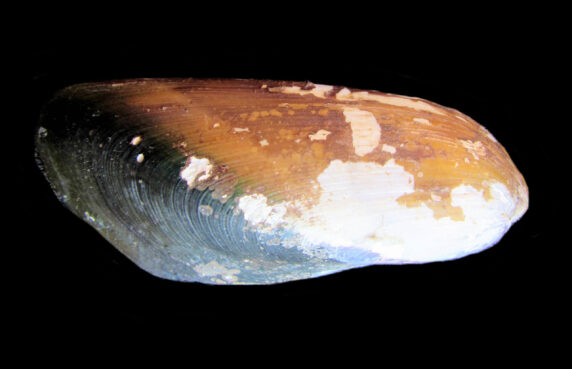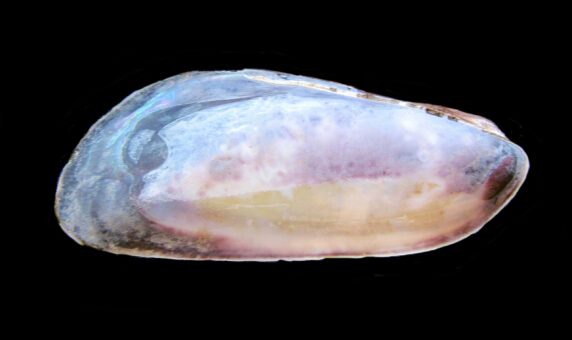Mangrove Mussel Shell, Myella guyanensis

 Mangrove Mussel Shell, Mytella guayanensis. Shell collected from within the estuary of the Magdalena Bay complex, Baja California Sur, October 2018. Size: 3.5 cm (1.4 inches) x 2.1 cm (0.8 inches) x 0.6 cm (0.2 inches). Identification courtesy of Bob Hillis.
Mangrove Mussel Shell, Mytella guayanensis. Shell collected from within the estuary of the Magdalena Bay complex, Baja California Sur, October 2018. Size: 3.5 cm (1.4 inches) x 2.1 cm (0.8 inches) x 0.6 cm (0.2 inches). Identification courtesy of Bob Hillis.

 Mangrove Mussel Shell, Mytella guayanensis. Shell collected from within the estuary of the Magdalena Bay complex, Baja California Sur, October 2018. Size: 3.5 cm (1.4 inches) x 2.1 cm (0.8 inches) x 0.6 cm (0.2 inches). Collection, photographs and identification courtesy of Bob Hillis.
Mangrove Mussel Shell, Mytella guayanensis. Shell collected from within the estuary of the Magdalena Bay complex, Baja California Sur, October 2018. Size: 3.5 cm (1.4 inches) x 2.1 cm (0.8 inches) x 0.6 cm (0.2 inches). Collection, photographs and identification courtesy of Bob Hillis.
The Mangrove Mussel, Mytella guayanensis (Lamarck, 1819), is a bivalve mollusk that is a member of the Mytilidae Family of Mussels. They are also known as the Guiana Swamp Mussel and in Mexico as mejillo’n fanguero de Guayana. The shell has a very rounded triangular inflated profile with a ventral margin that is straight to slightly concave. The posterior end of the shell is broadly rounded and the anterior end is short and slightly pointed. The beak is low and set back from the anterior end. The exterior is sculpted with very fine, concentric, lines. The exterior of shells are covered by a periostracum that is divided diagonally along the length of the shell with one half being dark green and the other half brown; the interior of the shell is white with purple tinges. The Mangrove Mussel reach a maximum length of 7.0 cm (2.8 inches) x 4.2 cm (1.7 inches).
Mangrove Mussels reside in mud substrate and are found in the intertidal zone. They range from Magdalena Bay, Baja California Sur to Peru and throughout the Sea of Cortez. They are also found in the Western Atlantic Ocean.
Synonyms are Modiola bicolor, Modiola brasiliensis, Modiola guayanensis, Modiola semifusca, Modiola subfuscata, Mytella bicolor, and Mytelus bicolor.